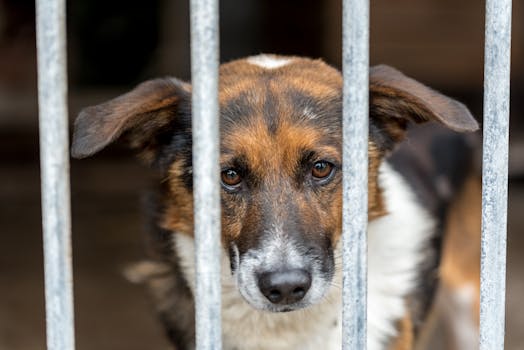
A Lost Pet’s Quest to Find its Way Home: The Journey of a Lifetime
Lost pet’s quest to find its way home is a journey that no pet owner wants to experience. The feeling of losing a beloved pet is devastating, and the thought of them being alone and scared is unbearable. However, with the right mindset and support, it is possible for a lost pet to find its way back home. In this article, we will explore the journey of a lost pet and provide valuable tips on how to prevent losing your pet and what to do if your pet goes missing.
Understanding the Mindset of a Lost Pet

When a pet goes missing, they experience a range of emotions, from fear and anxiety to confusion and disorientation. Lost pets often find themselves in unfamiliar surroundings, which can be overwhelming and scary. They may struggle to find food, water, and shelter, and their natural instincts may kick in, causing them to behave differently than they would in their normal environment. Understanding the mindset of a lost pet is crucial in helping them find their way back home.
The Importance of Microchipping and Identification

Microchipping and identification are essential in ensuring that your pet can be easily identified and returned if they go missing. A microchip is a small device that is implanted under your pet’s skin, which contains a unique identification number that can be read by a special scanner. This number is linked to your contact information, making it easier for animal shelters and veterinary clinics to contact you if your pet is found. Additionally, ensuring that your pet wears a collar with an identification tag can help identify them and provide contact information to anyone who finds them.
Preventing Lost Pets: Tips and Advice

Preventing lost pets is always better than trying to find a lost pet. Here are some valuable tips and advice on how to prevent losing your pet:
- Microchip your pet and ensure that their microchip information is up-to-date.
- Ensure that your pet wears a collar with an identification tag.
- Keep your pet on a leash or in a secure area when outside.
- Provide a safe and comfortable living environment for your pet.
- Spay or neuter your pet to reduce the risk of them wandering off.
What to Do if Your Pet Goes Missing

If your pet goes missing, it is essential to act quickly and take the right steps to increase the chances of finding them. Here are some steps you can take:
- Contact local animal shelters and veterinary clinics to report your pet missing.
- Post flyers in your neighborhood and surrounding areas with a recent photo of your pet and your contact information.
- Use social media to spread the word and ask for help in finding your pet.
- Search the surrounding area, including local parks and trails.
- Check with local animal control and humane societies to see if anyone has turned in a pet matching your pet’s description.
Conclusion

A lost pet’s quest to find its way home is a journey that requires patience, persistence, and the right support. By understanding the mindset of a lost pet, microchipping and identifying your pet, preventing lost pets, and taking the right steps if your pet goes missing, you can increase the chances of reuniting with your beloved pet. Remember, losing a pet is a devastating experience, but with the right mindset and support, it is possible for a lost pet to find its way back home.






